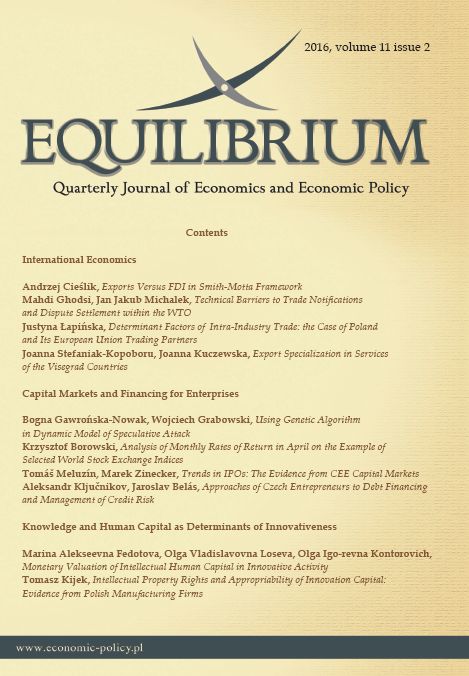USING GENETIC ALGORITHM IN DYNAMIC MODEL OF SPECULATIVE ATTACK
USING GENETIC ALGORITHM IN DYNAMIC MODEL OF SPECULATIVE ATTACK
Author(s): Bogna Gawrońska-Nowak, Wojciech GrabowskiSubject(s): Economy, Financial Markets
Published by: Instytut Badań Gospodarczych
Keywords: currency crisis; dynamic model; genetic algorithms
Summary/Abstract: Evolution of speculative attack models shows certain progress in developing the idea of the role of expectations in the crisis mechanism. Obstfeld (1996) defines expectations as fully exogenous. Morris and Shin (1998) treat the expectations as endogenous (with respect to noise), not devoting too much attention to information structure of the foreign exchange market. Dynamic approach proposed by Angeletos, Hellwig and Pavan (2006) offers more sophisticated assumption about learning process. It tries to reflect time-variant and complex nature of information. However, this model ignores many important details like a Central Bank cost function. Genetic algorithm allows to avoid problems connected with incorporating information and expectations into agent decision-making process to an extent. There are some similarities between the evolution in Nature and currency market performance. In our paper an assumption about rational agent behaviour in the efficient market is criticised and we present our version of the dynamic model of a speculative attack, in which we use a genetic algorithm (GA) to define decision-making process of the currency market agents. The results of our simulation seem to be in line with the theory and intuition. An advantage of our model is that it reflects reality in a quite complex way, i.e. level of noise changes in time (decreasing), there are different states of fundamentals (with “more sensitive” upper part of the scale), the number of inflowing agents can be low or high (due to different globalization phases, different capital flow phases, different uncertainty levels).
Journal: Equilibrium. Quarterly Journal of Economics and Economic Policy
- Issue Year: 11/2016
- Issue No: 2
- Page Range: 287-306
- Page Count: 20
- Language: English

